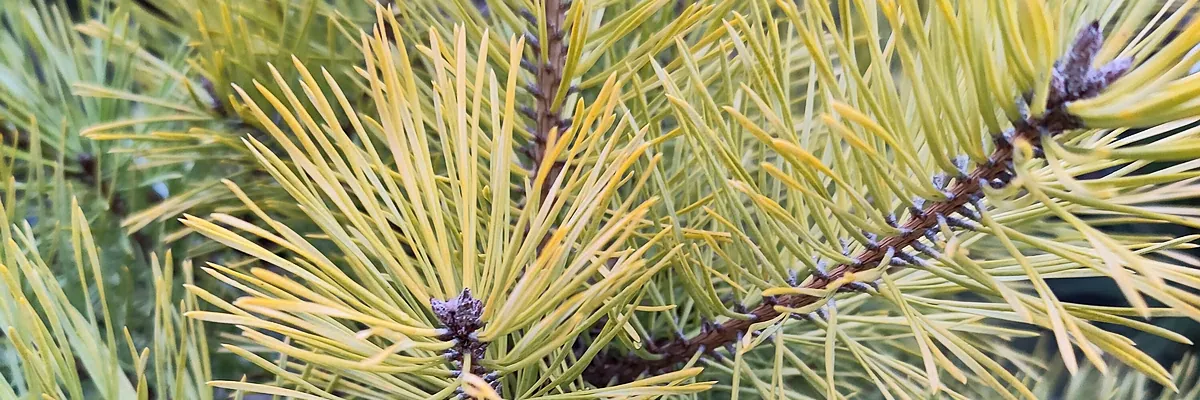
In winter, the days are getting shorter and shorter and the lack of sun leaves our gardens a little sad and dark. PINUS sylvestris ‘Anny’s Wintersun’ (yellow Scots pine) that we offer, will be the sun in your garden all winter long. This Scots pine is a form with really yellow and particularly bright foliage during this period. In the photo above, the coloring is just beginning and not yet at its peak. In reality, it becomes much more yellow. Its adult size is modest (about 3 to 4 m) and its growth is quite slow. As a result, it is a plant suitable for both large and small gardens. For lovers of cloud pruning (Niwaki), it will be the ideal plant.
How to grow PINUS sylvestris ‘Anny’s Wintersun’
PINUS sylvestris ‘Anny’s Wintersun’ can find its place in
- a pot or container, on a terrace or a balcony or even quite simply in
- the ground in a bedding.
Finally, put it in full sun, if you want the most intense yellow. It is perfectly resistant to temperatures below -20 °C and grows in any type of soil. In conclusion, it is a very easy plant to grow. As a result, it is perfectly suited to beginners and experienced gardeners.
History and Origin
The largest specimen of the type species, PINUS sylvestris is 210 years old and is found in Estonia. While the oldest tree is in Lapland (region in Finland) with 760 years.
The largest specimen of the type species, PINUS sylvestris is 210 years old and is found in Estonia. While the oldest tree is in Lapland (region in Finland) with 760 years.
The bark turns orange-red and is very decorative. Cela est aussi le cas pour le PINUS sylvestris ‘Anny’s Wintersun’.
There are more than 100 varieties of Scots pine in the botanical literature. However, recognized botanical organizations only accept a few.
Then, PINUS sylvestris is the only pine native to Northern Europe. Its natural habitat extends from Western Europe to Eastern Siberia.
Scots pine is an important tree in the forestry industry. Its wood is used for construction timber. In addition, its fibers are used in the manufacture of vegetable flannel.
It is one of the first species introduced by humans to North America in the 1600s.
Finally, the Belgians have used PINUS sylvestris extensively in the consolidation of tunnels in mines. In fact, its wood gives out creaks when it needs replacement.


Leave a Reply